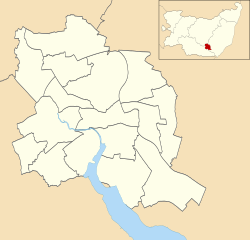| St Mary-at-the-Quay Church, Ipswich | |
|---|---|
 St Mary-at-the-Quay Church, Key Street at Night | |
| 52°03′10″N1°09′23″E / 52.0529°N 1.1564°E | |
| OS grid reference | TM 166 442 |
| Location | Ipswich, Suffolk |
| Country | England |
| Denomination | Anglican |
| Membership | Evangelical |
| Website | River Church Churches Conservation Trust |
| Architecture | |
| Functional status | Anglican Church plant |
| Heritage designation | Grade II* |
| Designated | 19 December 1951 |
| Architectural type | Church |
| Style | Perpendicular Gothic |
| Specifications | |
| Materials | Flint with stone dressings |
| Clergy | |
| Senior pastor | Amy Key and Matt Key |
St Mary-at-the-Quay Church is a former Anglican church in Ipswich, Suffolk, England. The medieval building is under the care of the Churches Conservation Trust. [1] and since September 2021 it has been used by River Church to implement an approach to evangelicism developed by Holy Trinity Brompton as part of the network of HTB church plants. The church originally served the thriving industry around the docks area of the town and those that worked there. After closing for regular worship in the 1950s the church was transferred to the CCT in 1973 and underwent a major restoration programme completing in 2016. [2] [3]


